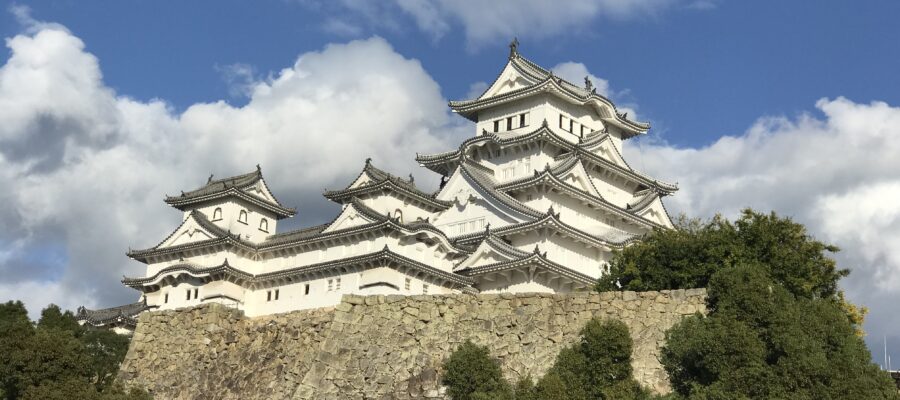世界遺産の姫路城
年に数度、国宝の姫路城を御案内することがあります。法隆寺と共に日本で初めて世界遺産に指定された姫路城は、その優美な姿で海外の皆様を迎えてくれます。私の好きなスポットの1つです。お城を御案内するときに気を遣うのは、歩行時の高低差と距離です。
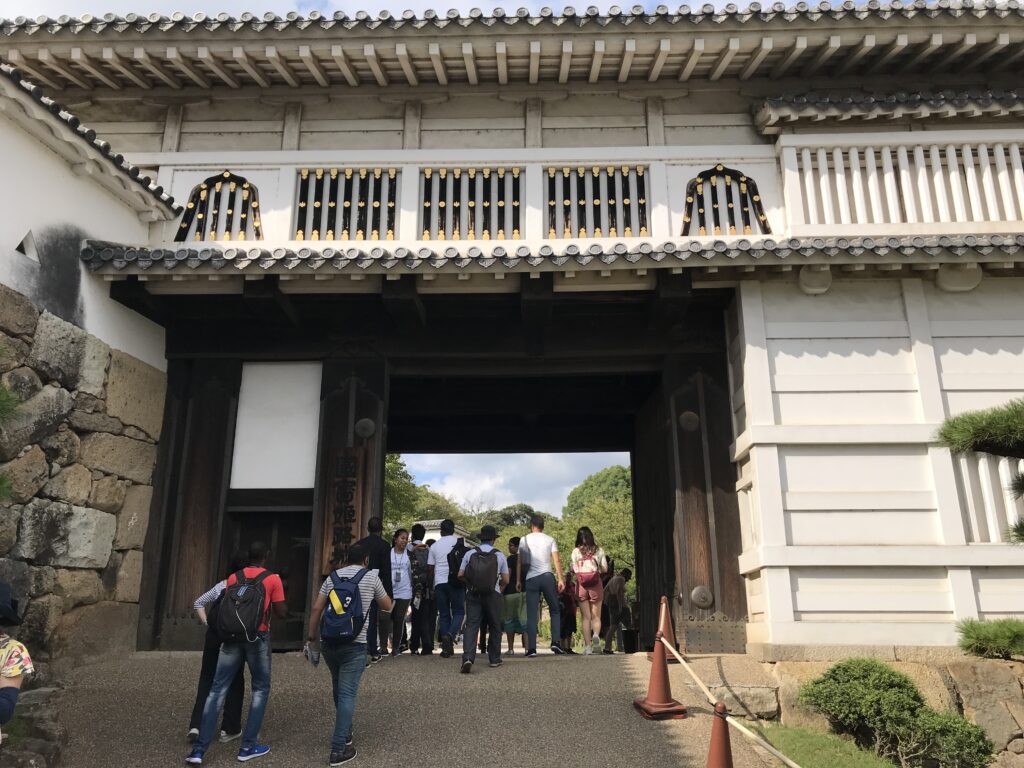
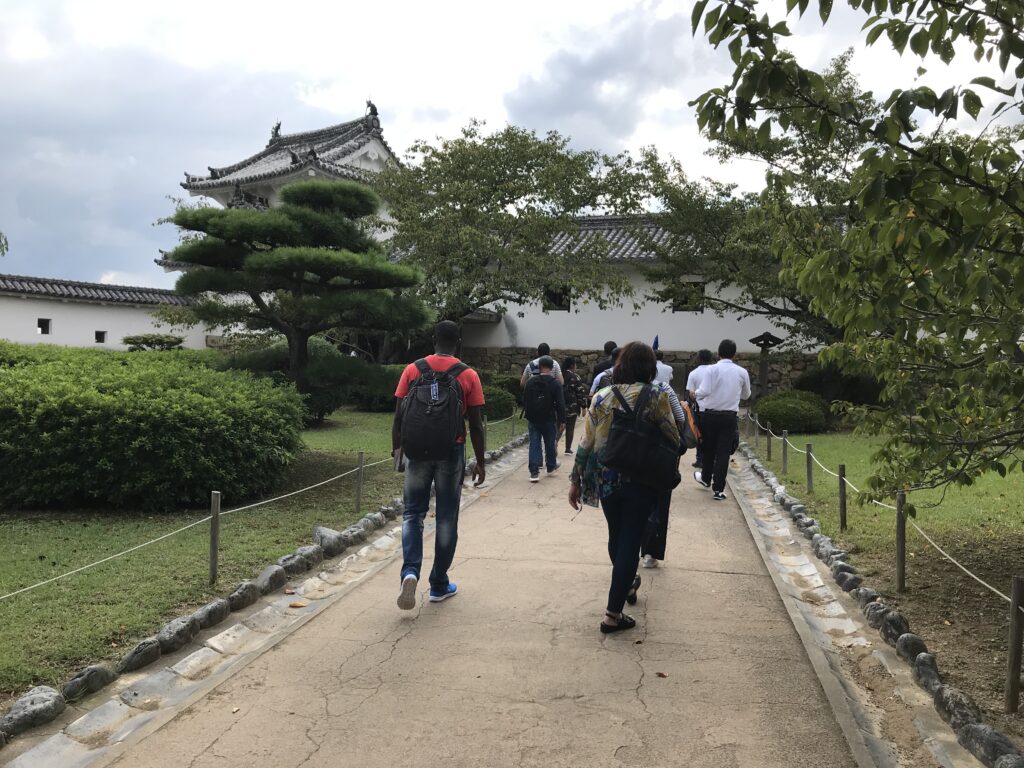
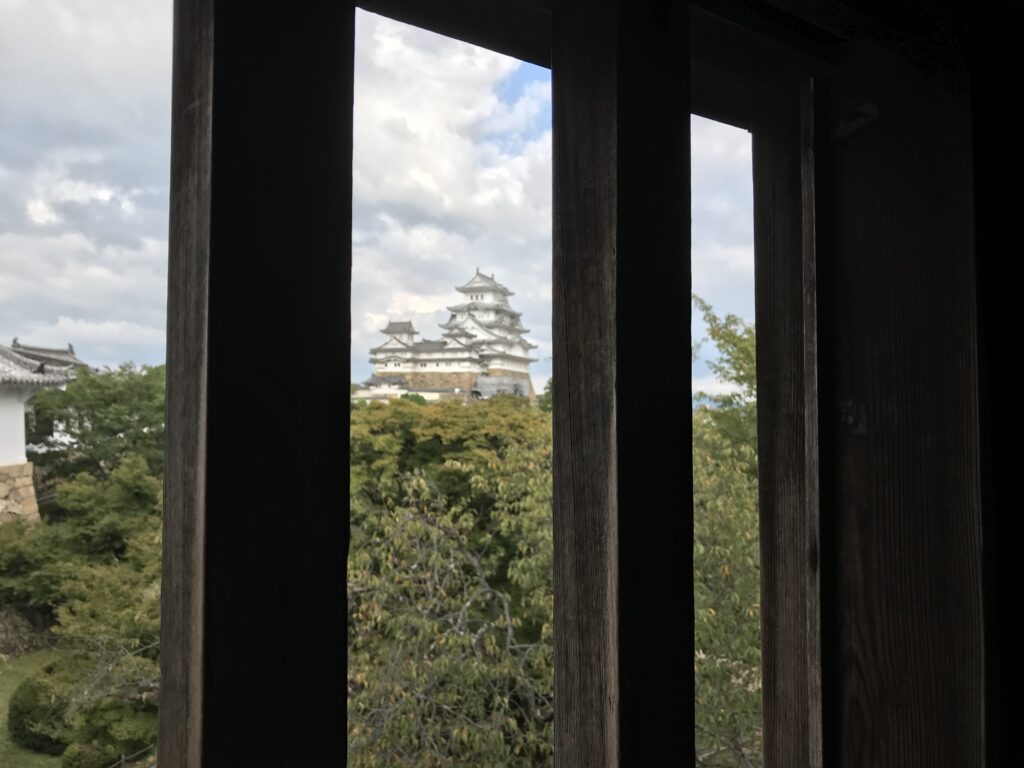
結構歩くお城見学
歩くことが苦手そうな方々には、西の丸方面はスキップして、いきなり天守に向かいます。それでも、天守までは坂道を行ったり来たりすることになるので、天守を登ることをためらう、あるいは断念する方も一定程度います。そういう場合は、天守下の広場でお待ちいただいています。
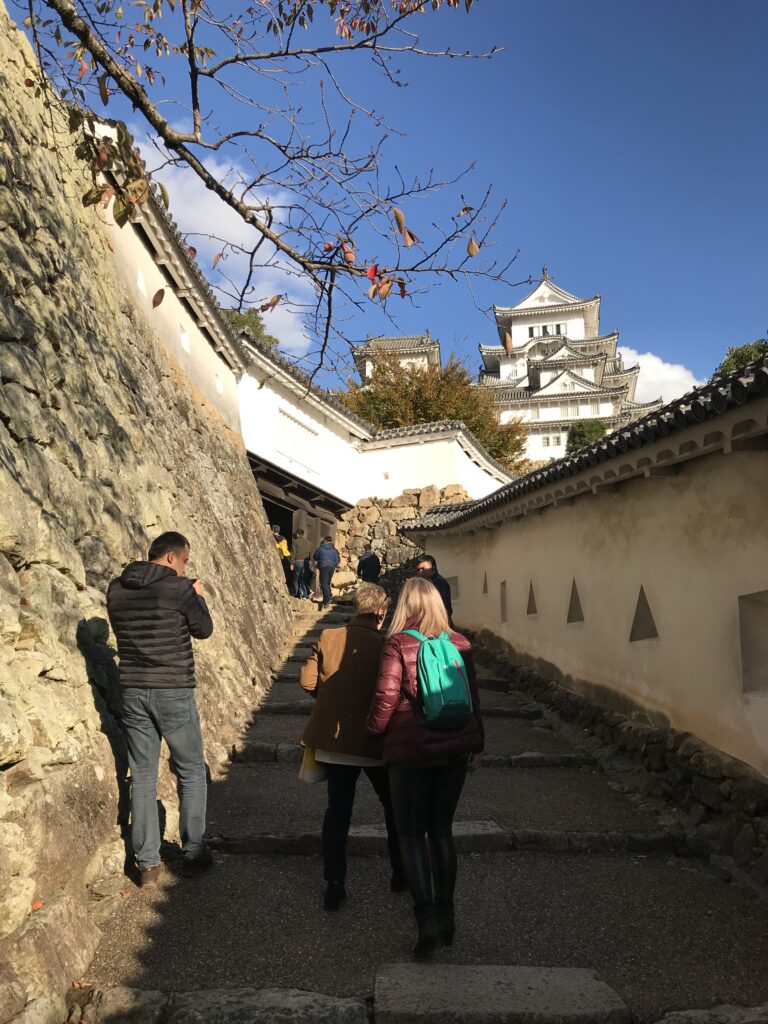
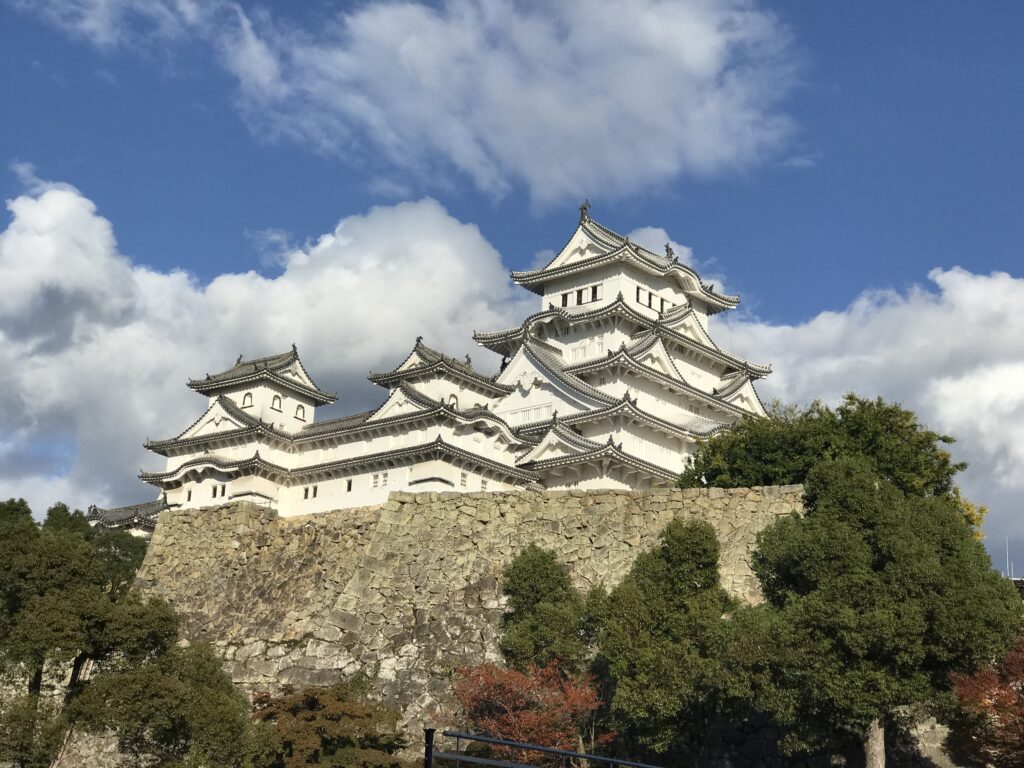
姫路城は美しいだけでなく、西国大名に対して睨みを効かせるお城ですから、防備を最大限に考慮した縄張になっていて、天守にたどり着くまでに、直線距離の3倍歩かないといけないと言われています。所々に狭間もあり、実戦を想定した城だと実感させられます。
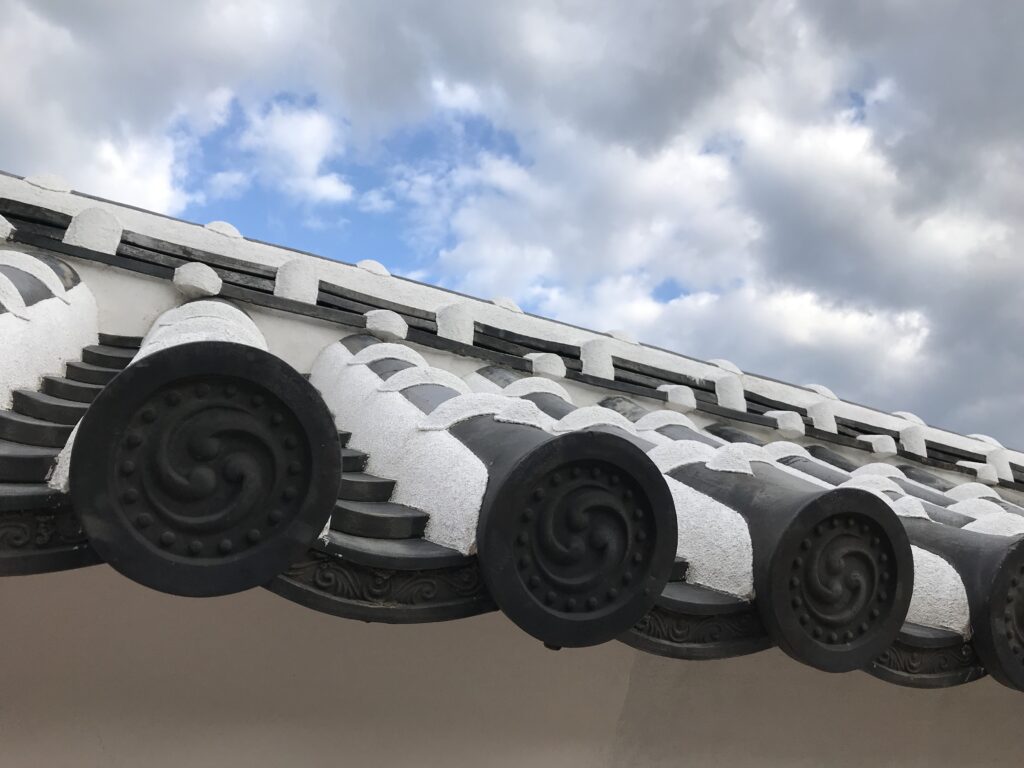
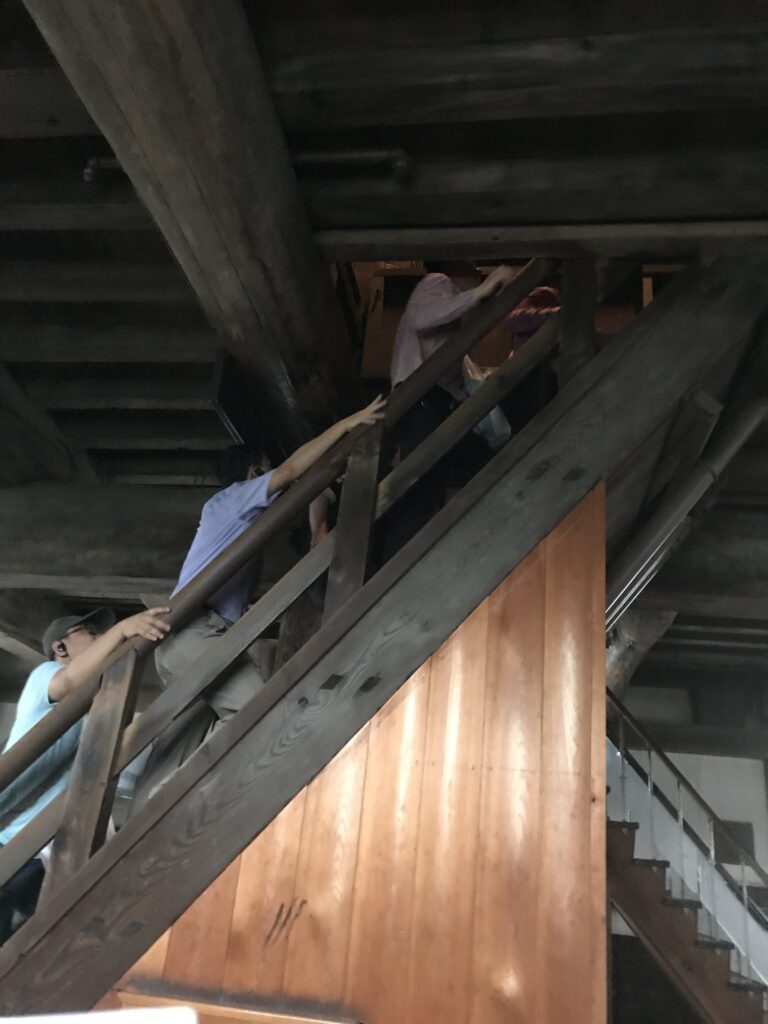
てんこ盛りの白シックは本当に分厚い
前回の改修工事後、御城が真っ白になったことが話題になりました。瓦と瓦の間に塗りこめられた白漆喰が原因ですが、写真のようにてんこ盛りで白漆喰が塗られています。あと、城内の階段は急ですから、女性のお客様には、スカートで登城されないようにお願いしています。天守の最上階では、白漆喰で覆われた瓦の先に、平成版のシャチホコが乗っています。天守から下りてくると、明治版と昭和版のシャチホコも置かれているので、表情の変化もわかると思います。
目立たず張り巡らせた防災設備
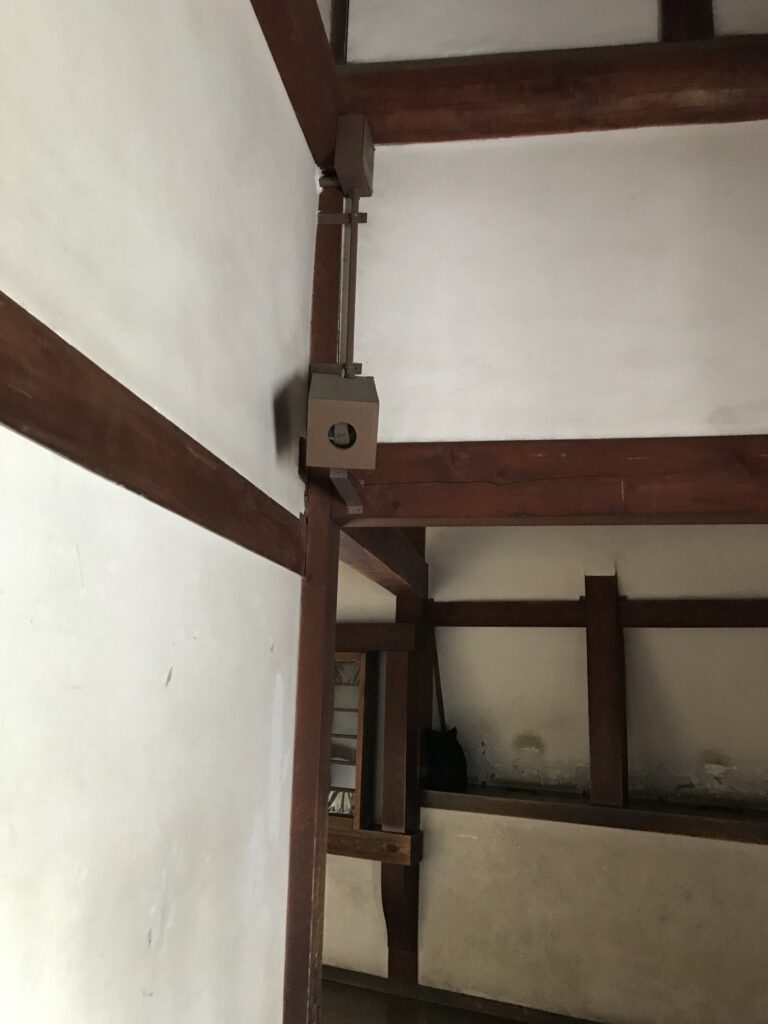
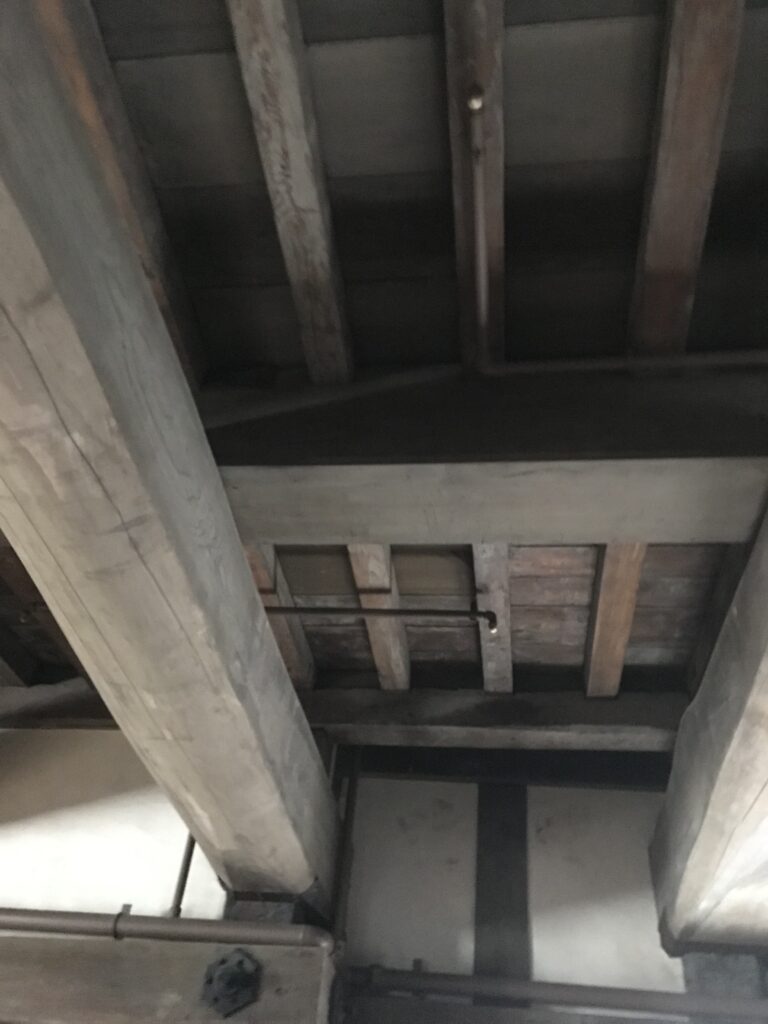
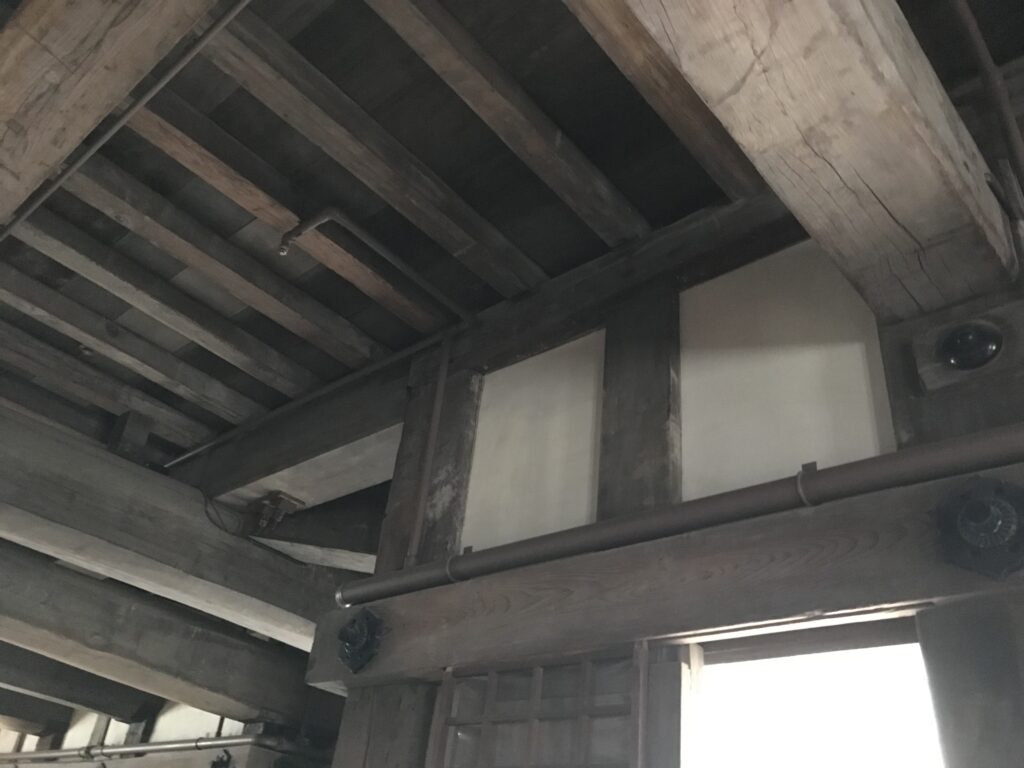
研修で来られている方を案内するので、一般の観光客と異なる関心をお持ちになっています。防災の研修で来られた方々には、天守内の色に溶け込んでいて、ぱっと見では目立たない、防犯カメラやスプリンクラー、それに防火水用の配管も見ていただきます。世界遺産を守るために、城内に張り巡らされた防火設備を見て、自国の文化財を火災から守る施策に活かしていただきたいと考えています。(完)
姫路城が紹介されている書籍
姫路城を紹介した本は多数あると思いますが、地元の方が解説されている本書はガイドさんのお役に立つと思います。
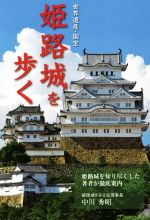
価格:1,375円
(2021/7/14 12:18時点)
感想(0件)
Himeji Castle (1)
Several times a year, we take visitors to the National Treasure Himeji-jo Castle. Himeji-jo was the first castle in Japan, along with Horyu-ji Temple, to be designated as a World Heritage Site, and its graceful appearance welcomes visitors from overseas. It is one of my favorite spots. When guiding visitors to the castle, I pay attention to the height difference and distance when walking.
For those who seem to have difficulty walking, I skip the Nishinomaru area and head straight for the keep. Even so, there are a certain number of visitors who hesitate or abandon the idea of climbing the castle tower because of the uphill walk to and from the tower. In such cases, visitors are asked to wait in the plaza below the keep.
Himeji Castle is not only beautiful, but it is also a castle to keep an eye on the feudal lords in the western part of Japan, so the castle is designed with maximum protection in mind. It is said that you have to walk three times the distance in a straight line to reach the castle keep. There are also narrow gaps here and there, making you realize that the castle was designed for actual battles.
After the last renovation work, the castle became the talk of the town because of its pure white color. The reason for this was the white plaster that was applied between the roof tiles. Also, the stairs inside the castle are steep, so female visitors are asked not to wear skirts. On the top floor of the castle tower, there is a Heisei version of a killer whale on the tip of a tile covered with white plaster. When you come down from the keep, the Meiji and Showa versions of the shachihoko are also placed, so you can see the change in their expressions.
We guide visitors who are here for training, so they have a different interest from ordinary tourists. Those who come for training in disaster prevention will see the security cameras and sprinklers, which blend in with the colors of the keep and do not stand out at a glance, as well as the piping for fire water protection. We hope that visitors will see the fire prevention systems that have been installed in the castle to protect the World Heritage site, and that they will make use of these systems in their own measures to protect their country’s cultural assets from fire. (End)
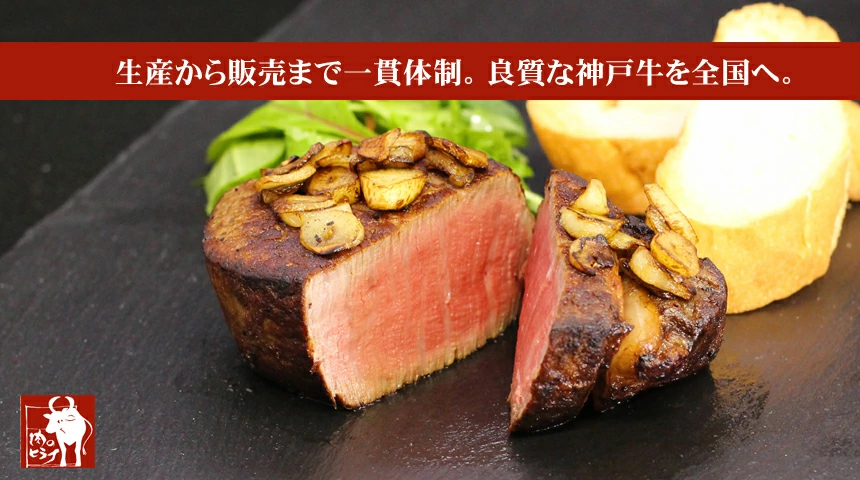
価格:8,640円
(2022/8/10 13:06時点)
感想(898件)
Château de Himeji (1)
Plusieurs fois par an, nous emmenons des visiteurs au trésor national qu’est le château de Himeji-jo. Himeji-jo a été le premier château du Japon, avec le temple Horyu-ji, à être désigné comme site du patrimoine mondial, et son aspect gracieux accueille des visiteurs venus de l’étranger. C’est l’un de mes endroits préférés. Lorsque je guide les visiteurs vers le château, je fais attention à la différence de taille et à la distance à parcourir.
Pour ceux qui semblent avoir des difficultés à marcher, je saute la zone de Nishinomaru et me dirige directement vers le donjon. Malgré cela, il y a un certain nombre de visiteurs qui hésitent ou abandonnent l’idée de monter à la tour du château en raison de la montée à parcourir pour y accéder et en revenir. Dans ce cas, les visiteurs sont priés d’attendre sur la place située sous le donjon.
Le château de Himeji n’est pas seulement beau, c’est aussi un château destiné à surveiller les seigneurs féodaux de la partie occidentale du Japon, et il a donc été conçu pour assurer une protection maximale. On dit qu’il faut marcher trois fois la distance en ligne droite pour atteindre le donjon du château. Il y a également des espaces étroits ici et là, ce qui vous fait comprendre que le château a été conçu pour de véritables batailles.
Après les derniers travaux de rénovation, le château est devenu le sujet de conversation de la ville en raison de sa couleur blanche pure. La raison en est le plâtre blanc qui a été appliqué entre les tuiles du toit. De plus, les escaliers à l’intérieur du château sont raides, il est donc demandé aux visiteurs féminins de ne pas porter de jupes. Au dernier étage de la tour du château, il y a une version Heisei d’un orque sur la pointe d’une tuile recouverte de plâtre blanc. Lorsque vous descendez du donjon, les versions Meiji et Showa du shachihoko sont également placées, de sorte que vous pouvez voir le changement dans leurs expressions.
Nous guidons les visiteurs qui sont ici pour une formation, ils ont donc un intérêt différent de celui des touristes ordinaires. Ceux qui viennent pour une formation à la prévention des catastrophes verront les caméras de sécurité et les sprinklers, qui se fondent dans les couleurs du donjon et ne se distinguent pas au premier coup d’œil, ainsi que les canalisations pour la protection contre les incendies. Nous espérons que les visiteurs verront les systèmes de prévention des incendies qui ont été installés dans le château pour protéger le site du patrimoine mondial, et qu’ils utiliseront ces systèmes dans leurs propres mesures pour protéger les biens culturels de leur pays contre les incendies. (Fin)
